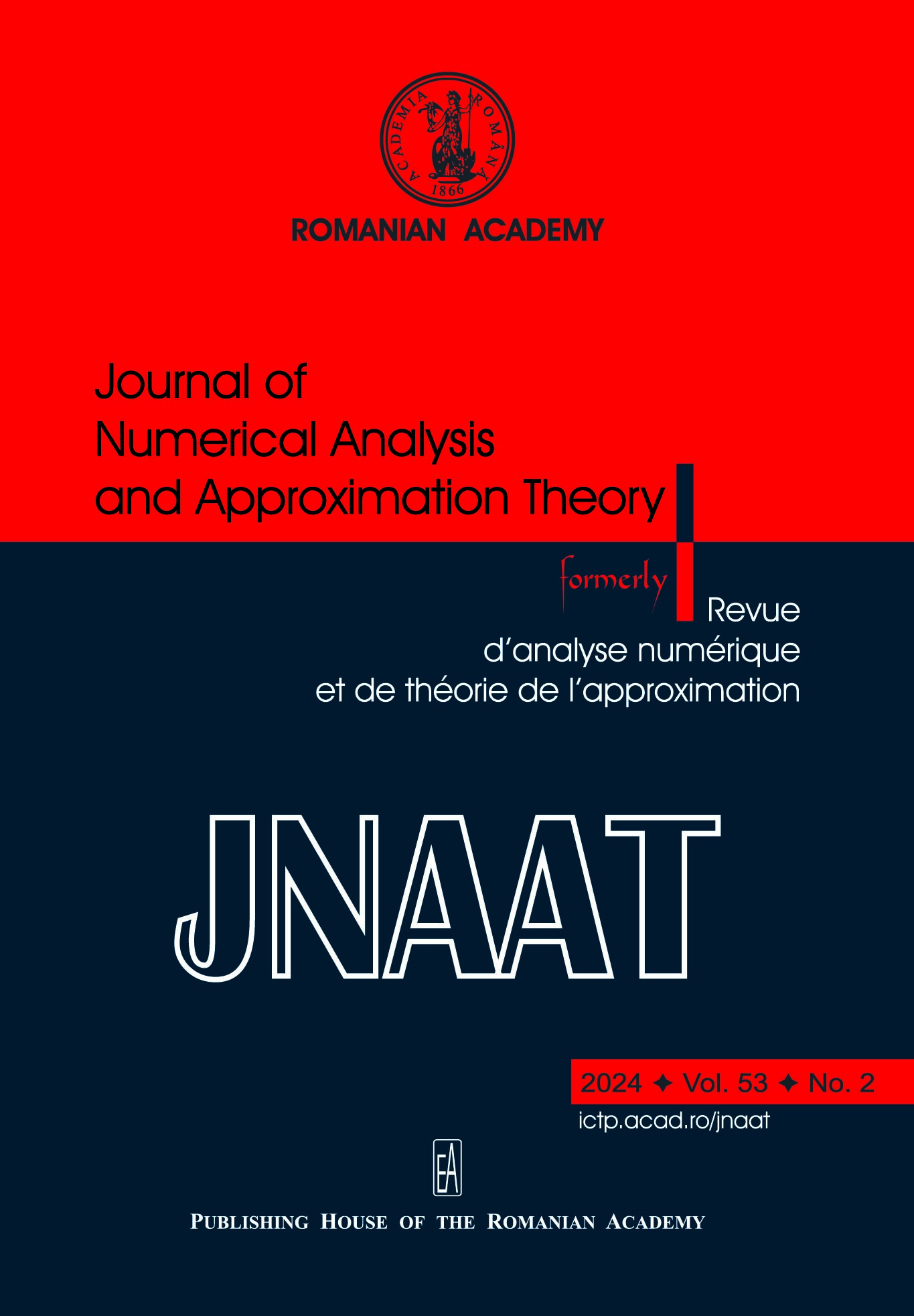Chebfun approximation to structure of positive radial solutions for a class of supercritical semi-linear Dirichlet problems
DOI:
https://doi.org/10.33993/jnaat532-1503Abstract
We use the Chebfun programming package to approximate numerically the structure of the set of positive radial solutions for a class of supercritical semilinear elliptic Dirichlet boundary value problems. This structure (bifurcation diagram) is provided only at the heuristic level in many important works. In this paper, we investigate this structure, as accurately as possible, for the class
of problems mentioned above taking into account the dimension of Euclidean space as well as the physical parameter involved.
Downloads
References
J. Bebernes, D. Eberly and W. Fulks, Solution profiles for some simple combustion models, Nonlinear Analysis-Theory Methods and Applications, 10 (1986), pp. 165-177. DOI: https://doi.org/10.1016/0362-546X(86)90044-1
A. Birkisson, T.A. Driscoll, Automatic Frechet differentiation for the numerical solution of boundary-value problems, ACM Transactions on Mathematical Software, 38 pp. 1-39 https:doi.org/10.1145/2331130.2331134 DOI: https://doi.org/10.1145/2331130.2331134
C.C. Chen and C.-S. Lin, Uniqueness of the ground state solutions of ∆u + f (u) = 0 in Rn, n = 2, 3, Comm. Partial Differential Equations, 16 (1991), pp. 1549-1572. DOI: https://doi.org/10.1080/03605309108820811
I.M. Gelfand, Some problems in the theory of quasilinear equations, Am. Math. Soc. Transl. 29, (1963) pp. 295-381. DOI: https://doi.org/10.1090/trans2/029/12
C.I. Gheorghiu, Chebfun Solutions to a Class of 1D Singular and Nonlinear Boundary Value Problems, Computation, 10 (2022) 116. https://doi.org/10.3390/computation10070116 DOI: https://doi.org/10.3390/computation10070116
B. Gidas, W.-M. Ni and L. Nirenberg, Symmetry and related properties via the maximum principle, Comm. Math. Phys., 68 (1979), pp. 209-243. https://doi.org/10.1007/BF01221125 DOI: https://doi.org/10.1007/BF01221125
D.D. Joseph and T.S. Lundgren, Quasilinear Dirichlet problems driven by positive sources, Arch. Rational Mech. Anal., 49 (1973), pp. 211-269 https://doi.org/10.1007/BF00250508. DOI: https://doi.org/10.1007/BF00250508
J.S. McGough, Numerical continuation and the Gelfand problem, Appl. Math. Comput., 89 (1998), pp. 225-239. https://doi.org/10.1016/S0096-3003(97)81660-8 DOI: https://doi.org/10.1016/S0096-3003(97)81660-8
T. Ouyang and J. Shi, Exact multiplicity of positive solutions for a class of semilinear problem, II, J. Differ. Equations, 158 (1999), pp. 94-151 https://doi.org/10.1016/S0022-0396(99)80020-5 DOI: https://doi.org/10.1016/S0022-0396(99)80020-5
J.R. Parks, Criticality criteria for various configurations of a self-heating chemical as functions of activation energy and temperature of assembly, J. Chem. Phys., 34 (1960), pp. 46-50. https://doi.org/10.1063/1.1731612 DOI: https://doi.org/10.1063/1.1731612
L.N. Trefethen, A. Birkisson, T.A. Driscoll, Exploring ODEs, SIAM, Philadelphia, 2018. DOI: https://doi.org/10.1137/1.9781611975161
Published
Issue
Section
License
Copyright (c) 2024 Calin-Ioan Gheorghiu

This work is licensed under a Creative Commons Attribution 4.0 International License.
Open Access. This article is distributed under the terms of the Creative Commons Attribution 4.0 International License, which permits unrestricted use, distribution, and reproduction in any medium, provided you give appropriate credit to the original author(s) and the source, provide a link to the Creative Commons license, and indicate if changes were made.










